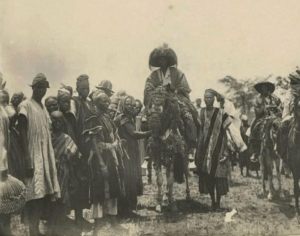
Alaafin is the title for the traditional ruler, or Oba of Oyo town, whose authority from the fifteenth to the seventeenth century extended to great parts of the western Yoruba territory of old. For over a hundred years, starting from the early 18th Century, the Alaafins employed their great names and aura in upholding order and peace in both their Yoruba and non-Yoruba domains. Holders of the office maintained ascendancy over Dahomey, now the Republic of Benin, and as far as Popo, and Kumasi in the Gold Coast, now Ghana. The impression created Dalzel’s 1793 History of Dahomey was that the Alafin who resided in the old Oyo called Katunga was king over the entire Yoruba territory. Although Dalzel’s generalization is incorrect, it is a fact that many far off kingdoms paid tribute to the Alaafin of Oyo until the year 1818.
Monarchy as practiced in Oyo rejects a single privileged candidate to the stool of a recently deceased Alaafin. The Aremo who is the oldest prince is by tradition eliminated to forestall absolute supremacy among contenders. The right of the people to select their king from a number of princes, including sons and grandsons of former kings is thereby preserved. The system of governance in pre-colonial south West Nigeria was monarchical, but a very limited one. Laws were made and important decisions were reached only at the conclave of the high inner council of chiefs called Oyomesi in Oyo-Ile. The Alafin seldom operate outside this system.





















